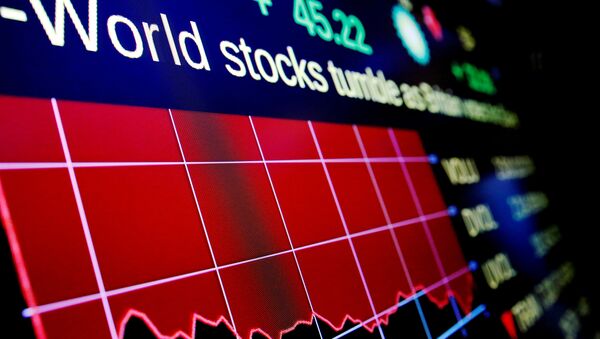The Dow dropped by 582.05 points as the S&P 500 fell by 67.52 points. The Nasdaq Composite saw a 18.84-point decline into red territory. The latest figures mark yet another day of a bear market for stocks as well as the worst first-quarter reports on record for the Dow and the S&P 500, which have each fallen more than 30%.
David Kostin, the chief US equity strategist at Goldman Sachs, has indicated that the speed of recovery for US markets depends largely on how soon the COVID-19 virus can be contained, the ability of an economic stimulus to help stabilize growth forecasts and whether US businesses will have “access to enough capital and liquidity to last the 90 to 180 days.”
“If short-term shutdowns lead to business defaults, closures, and permanent layoffs, the damage to corporate earnings growth could persist well after the virus is contained,” Kostin added in a note seen by CNBC.
Data provided by Johns Hopkins University notes that the number of confirmed, global cases of COVID-19 has surpassed 367,000, and that the death toll is more than 16,000. In the US, reported cases have topped 41,000, with over 470 recorded deaths. Areas with the highest reported deaths in the US were New York City with 98 and Washington State with 75.
Monday’s closing figures come after US stocks experienced their biggest one-week drop since the 2008 financial crisis last week. “Things will get worse before they get better and the markets will continue to reflect that reality,” Marc Chaikin, CEO of Chaikin Analytics, said in a note, according to CNBC.
US Senate’s $1.3 Trillion Stimulus Bill
Despite the weekend decision by Senate Democrats to block the $1.3 trillion rescue package from moving ahead, Senate Minority Leader Chuck Schumer (D-NY) told lawmakers Monday that officials are “very close to reaching a deal.”
“Very close. And our goal is to reach a deal today,” he added. “And we’re hopeful, even confident, that we will meet that goal.”
Senate Democrats indicated they blocked the Sunday procedural vote on the bill because the package favored corporations and failed to include sufficient protections and aid to Americans facing unemployment. The procedural vote failed 47-47 on Sunday. A new procedural vote held on the bill also failed Monday.
The Fed Lends More Support
The US’ central bank, the Federal Reserve, announced Monday that it would be initiating a series of programs in a bid to help markets function more efficiently as the Land of the Free attempts to improve its handling of the coronavirus outbreak.
New steps by the Fed include continued commitments to its asset buying program “in the amounts needed to support smooth market functioning and effective transmission of monetary policy to broader financial conditions and the economy.”
Additionally, the central bank will be launching an unspecified lending program for Main Street businesses and the Term Asset-Backed Securities Loan Facility, which was first implemented in the 2008 financial crisis. It will also be marking a first by opting to buy corporate bonds.
“We’re not at a turning point yet, we’re still seeing a crisis in markets. But, there are signs that some of the stress may be easing,” Lee Hardman, currency analyst at MUFG Bank, told the Wall Street Journal, referring to the Fed’s efforts to stabilize markets.
However, despite the bank’s attempts to calm US markets, investment banking companies Morgan Stanely and Goldman Sachs have predicted that the second quarter could see between 24% and 30% contraction. Goldman Sachs has also forecast that unemployment could peak at 9% amid the COVID-19 outbreak.



